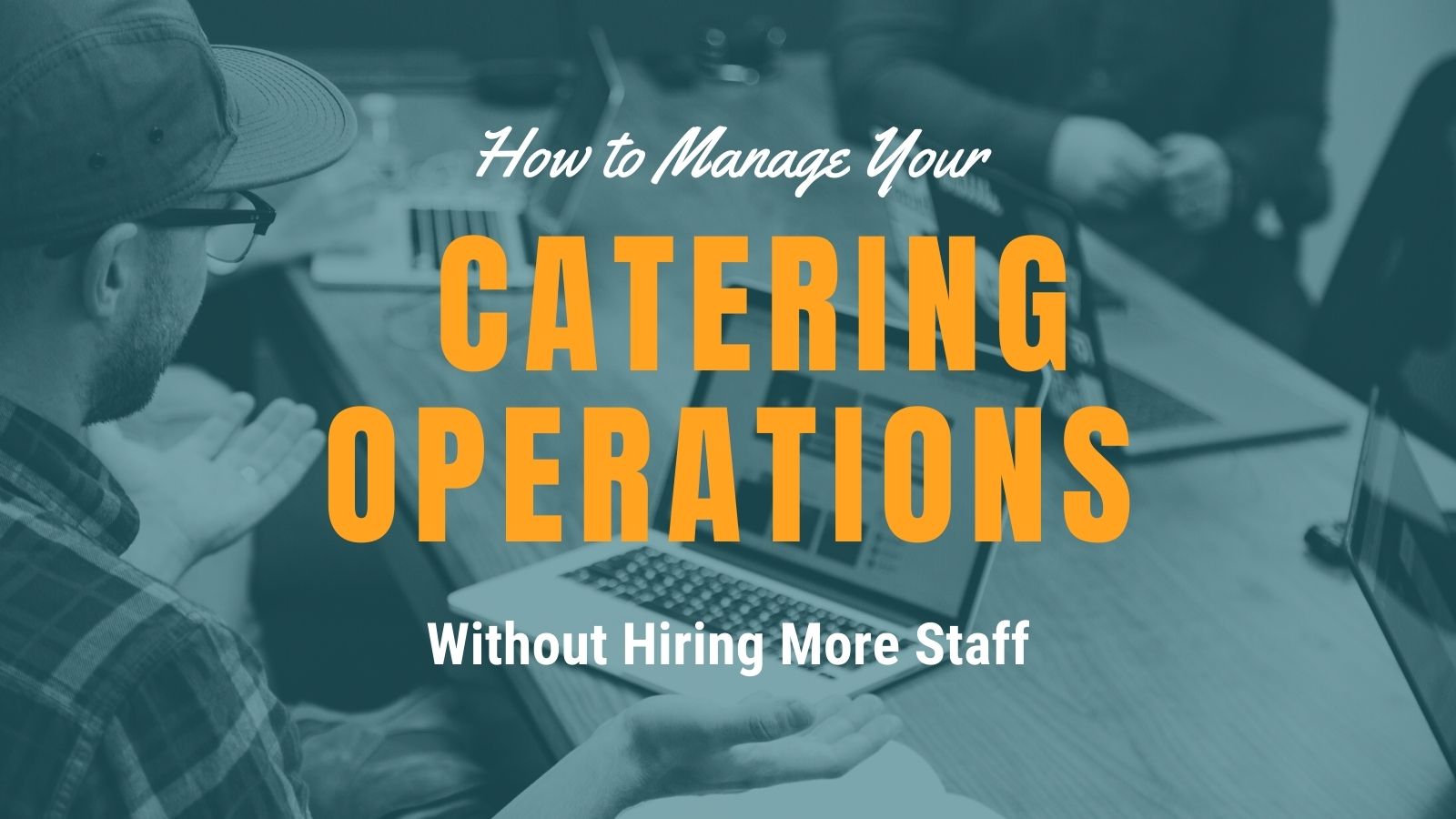Before you ventured into the catering business, you may have heard interesting stories about how lucrative the industry is.
Or how easy it is to make money. After all, people must eat.
This combined with your passion for cooking made you jump in with a lot of enthusiasm.
But you’ll agree with me that the catering business is not exactly a walk in the park.
Besides giving your customers what they want, you also have to compete with large and medium-sized caterers, face rising food/labor costs, and endure tight margins.
All these are enough to question whether it’s worth all the trouble.
But if you dig deeper, you’ll find caterers who navigated all these hurdles to forge a successful career in the catering industry.
What’s their secret?
Well, they were able to manage their catering operations effectively while keeping costs low and at the same time, keeping their customers happy.
And one way they are able to achieve this is by using a catering management system.
Long before technology became a thing, caterers and restaurants were using journals and spreadsheets to manage their catering operations.
However, this manual process is stressful and time-consuming. It causes lots of errors, reduces the number of orders, and affects revenue.
This is why catering management systems were invented to help caterers streamline operations, save more time, and increase productivity.
And now, if you search online, you’ll find lots of systems each with its unique features.
However, the overall goal of each software is to ensure you can organize your catering operations effectively. And this article will shed more light on this.
But first, let’s take an in-depth look at what a catering management system is.
Introduction to Catering Management Systems
While the global pandemic forced lots of caterers to automate their catering operations, you’d be surprised to find out there are still lots of people that operate manually.
Besides the manual process being stressful and time-consuming, it also relies on manpower to receive and process orders from customers. This means you get to incur additional costs on salaries.
And at a time when reducing cost is a priority due to the present economic situation, avoiding additional expenses is a no-brainer.
So, how do you solve this?
That’s where the catering management system comes in.
A catering management system is an online platform that helps caterers automate their entire catering operations.
This way, you can process more orders, generate more revenue and still have time to also focus on other important aspects of your business.
In addition, you will no longer find yourself stuck in the old-fashioned model of throwing more bodies at the problem. Instead, you can now harness the power of technology to grow your business.
Also, “convenience” is king these days. In fact, 97% of consumers say they have backed out of making a purchase because of inconvenience.
Thus, a catering management system makes it easy and convenient for customers to order food.
It also eliminates the need for going back and forth with you over the phone or email before placing orders. And this sometimes leads to errors and ultimately, an unpleasant customer experience.
But with a system in place, they can go online, place their orders and get their food delivered to their doorstep without the need for any staff intervention.
So, it goes without saying that if you want to get more catering clients, save costs, boost your bottom line and expand your business, then a catering management system is not a nice-to-have. It’s a must-have.
Now, you may be thinking:
With the number of catering management systems out there, how do I know the best one for me as a drop-off caterer?
Well, while it’s true that there are various catering systems, they are either too expensive, designed for restaurants or they don’t fulfill all the needs of drop-off caterers.
These were some of the problems that frustrated Carol Madaio, the Office Manager of DSquared Hospitality Company, a member of the Leading Caterers of America.
In her search for a catering management system, here’s what Carol had to say:
“Over the past several years, we researched many different online order and payment methods. We never found one that met all of our needs. They were too expensive, too complicated, or geared towards restaurants. We had an order form attached to our website but clients still needed to call in to pay.”
So to help you save time and make an informed decision, here are some key features to look for before choosing a catering management system.
5 Key Features Every Catering Management System Must Have
1. Menu management
If there’s one thing every drop-off caterer desires, it’s having control over their online menu. As such, menu management is something you should look out for in a catering system.
Here’s why:
First, restaurant-like systems where you are expected to process orders as you get them regardless of the quantity. However, a catering system should give you the option of having minimum order quantities on the menu items.
As a result, this prevents customers from ordering one item at a time which works great for the kitchen and increases the ticket total.
Secondly, having complete control over your menu makes it easy to make changes to your inventory, description, and prices without having to wait for customer support.
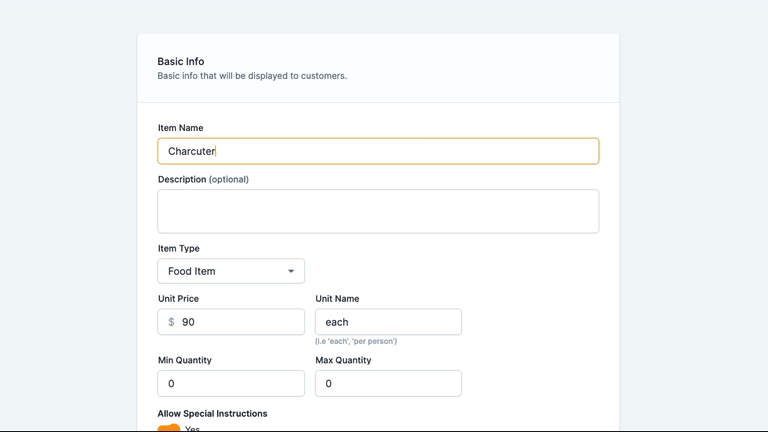
Another advantage of having complete control over your menu is you can keep your menu fresh with a variety of dishes, new cuisines or offer special holiday items.
This way, you are not offering the same menu every time which can be boring. It also makes you stand out from your competitors.
Linda Estrada of MyTacoGuy benefited from this feature when she started using HoneyCart Catering System for her business.
In her words:
“I love how I can make instant changes and updates to my menus without having to email someone to do it and waiting for days. I’m 100% in charge of my menu, my prices, and order volume.”
2. Ordering Policies
As a drop-off caterer, there are certain policies you need to have to guide your customers through the ordering process. However, this is only possible if you use a catering system that allows you to set policies.
When you take a deep look at restaurant-like systems, you’ll realize they don’t offer the kind of flexibility caterers crave.
So it’s safe to say these systems are built with ASAP orders in mind. After all, restaurants are focused on accepting orders of all sizes without much need for long lead times.
As such, you’ll find yourself going back and forth with your customers over the phone or email explaining certain policies to them. Even worse, you may have to reject their orders after they have placed them.
The result?
Time wasted for both parties and increased labor costs.
But a standard drop-off catering system should be built with catering policies in mind.
This way, customers are confined within your policies like how much lead time is required before placing an order, when they can make changes, or when they can cancel an order. And it makes the entire ordering process a lot more effective for you.
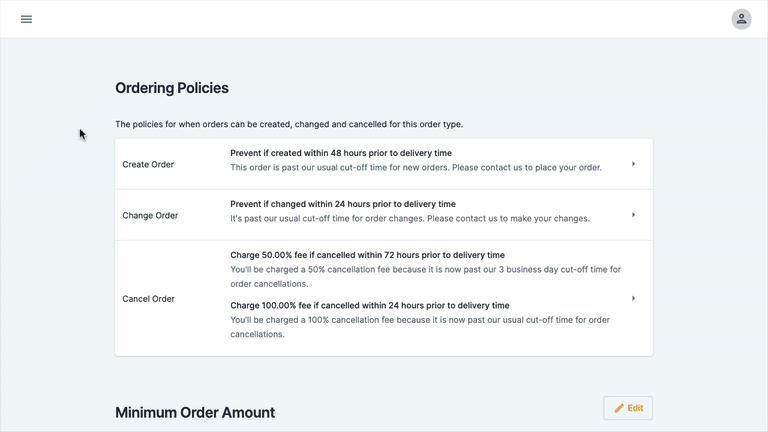
This issue of flexibility is something Katie Reineberg, the founder of Wine & Dined Chefs faced with her former system prompting her to search for a new catering system.
According to Katie:
“I tried Shopify and it was not flexible in changing delivery dates/times or the ordering scheduled and ordering process/procedures as HoneyCart has been.”
3. Payment Processing Policy
If there’s one key feature most catering systems don’t offer, it’s allowing caterers to be flexible with when they charge the customer.
In them, you’d find a one-size fit all payment process where they charge customers immediately they place their order.
But what if a catering system lets you delay processing the payment until you are ready?
The advantage of this is that caterers can confirm the order first or upsell other menu items since customers haven’t been charged yet.
Also, customers can decide to add to their order without having to go through the ordering process again. In addition, customers can cancel their order if they have a good reason to.
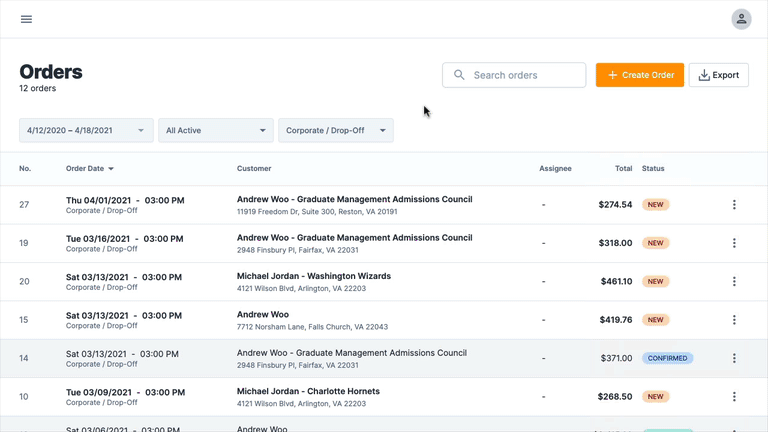
All these add to a great customer experience and increases your chances of generating more revenue for your business.
Abbey Duke of Sugarsnap found this to be a useful feature after trying HoneyCart.
According to Abbey:
“We gave HoneyCart a try and found it was really easy to implement, and our customers liked how intuitive it was. Features like lead times, blackout dates, and being able to charge cards later were designed for catering.
The best part? It levels the playing field for small business caterers just like Abbey mentioned:
“HoneyCart truly enables small caterers to compete with larger companies by having a really professional and easy-to-use online ordering system.”
4. Ordering Times
One thing that differentiates caterers and restaurants is availability.
A large number of restaurants are always available to prepare and deliver food on request. So most restaurant-like systems don’t allow you to customize ordering times.
However, as a drop-off caterer, there are times when you’ll be unavailable to prepare and deliver food to your clients.
It could be a specific time of the day or week, or perhaps, you’re fully booked for next Friday and can’t take more orders. So it makes sense to use a catering system that allows you to customize when orders are available for delivery or pickup.
You have the option of setting which hours in the day, or which days in the week you are available.

This is a feature that stood out for Jim Lenz, co-founder of Two Unique Catering when he was searching for a catering system to launch his prepared meal home delivery service.
In his words:
“The reason HoneyCart made sense for us was the fact that I could pick times that things were available for. Every other system seemed to be very restaurant-driven, like, “Hey, I want a burrito, and I need it in 30 minutes,” whereas catering is a very different process, and I needed the option to select days and times and then, even more so, the option to approve an order.”
5. Minimum Order Amount
When you consider margins in the catering industry are less than 10%, it makes sense for caterers to set a minimum order amount a customer must order.
This way, you can generate more revenue needed to expand operations. The common minimum order amount most caterers set are:
- The same minimum all the time (i.e $200 Mon-Fri)
- Different minimums at different times of the day (i.e $200 6 AM-5 PM or $300 after 5 PM)
- Different minimum on different days of the week (i.e $200 Mon-Fri or $350 Sat)
- And different minimum for different order types (i.e $200 for Delivery vs $75 for Pickup)
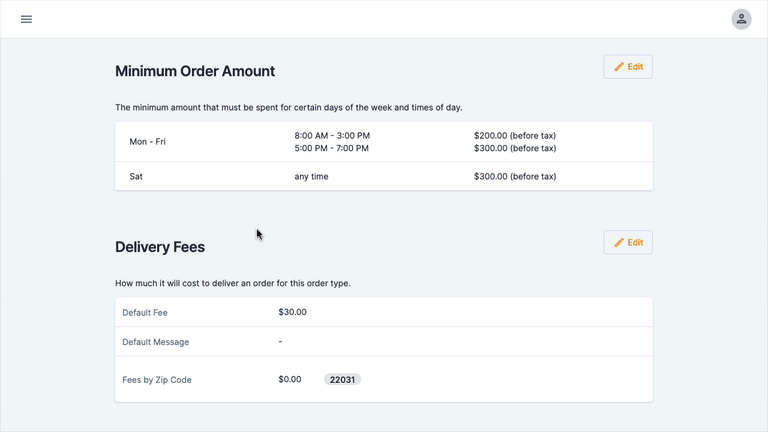
However, for this to work, you need a catering management system that allows you to automate these rules into the ordering process.
Another advantage of this feature is charging more for orders during times or days you feel are not convenient for you. As a result, your customers get to compensate you for it.
Conclusion: Use HoneyCart to Manage Your Catering Business Without Hiring More Staff
Without a doubt, embracing technology lets you streamline your business operations and take control of your entire business.
And a catering management system is what drop-off caterers need to save costs, save more time, increase efficiency and generate more revenue.
However, the challenge most caterers face is finding the right kind of software to manage their operations.
But with the key features mentioned above, you should have no problem running your catering business effectively.
And that’s exactly what HoneyCart Catering Management System offers.
HoneyCart allows you to take control of your entire ordering process. This way, you get to manage your catering business effectively without compromising quality and increasing costs significantly.
And like Carol of DSquared Hospitality Company mentioned, it’s designed specifically for caterers:
“I would most definitely recommend HoneyCart. I have not seen anything as easy to use yet extremely thorough for online ordering and payment that was specifically made for caterers.”
Ready to take it for a spin? Start your 14-day free trial right away.

